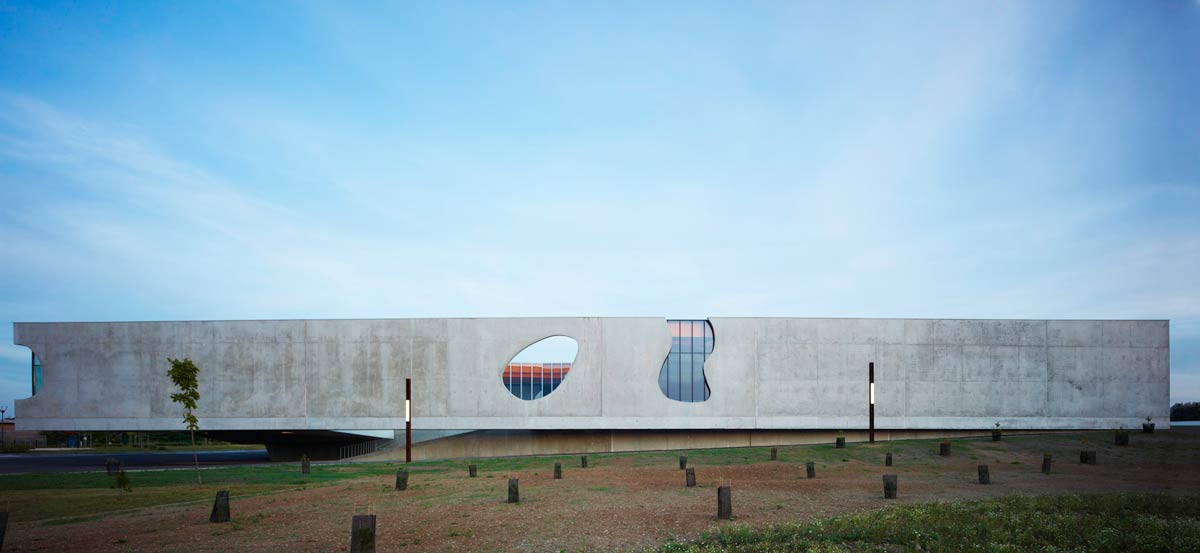
The music school is a monolithic block 100 metres long and 40 metres wide. It is sited perpendicular to the main road, projecting into the public area by 16 metres. The building is set against a forest of giant sequoias, also aligned perpendicular to the main road. The group forms a doorway marking the entrance to the town.

There is a broad forecourt area that disappears underneath the building. The public uses the monumental staircase leading to the inside courtyard and the main foyer. This is a wide area, open to the sky, treated with phosphorescent paint. In the evening it continues to glow with a strange light.
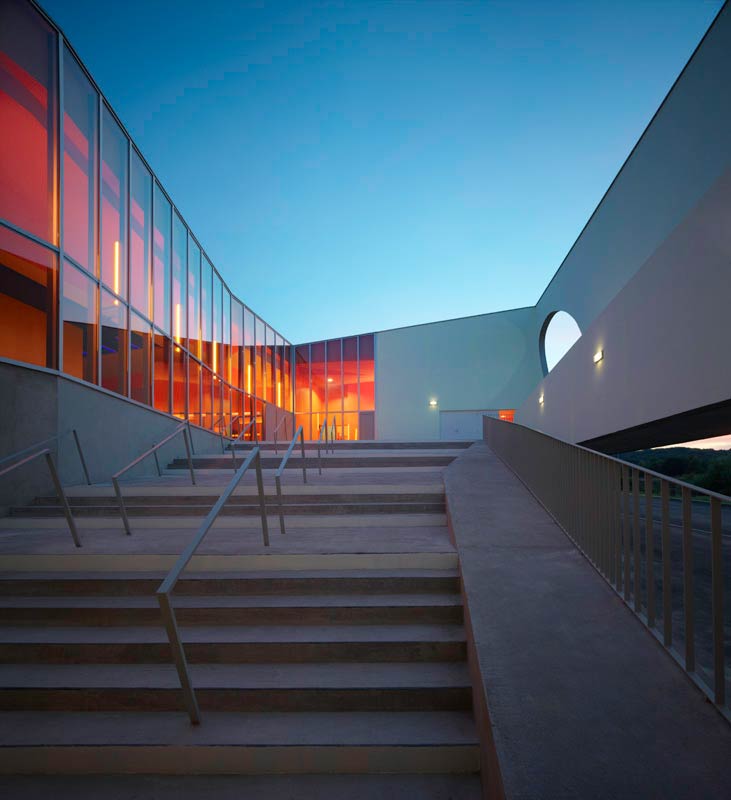
The building houses a mixed programme. It comprises premises for local teenagers, an extra-curricular centre for schoolchildren, a community hall, an auditorium, and a music school. These functions are brought together in a monolithic building. The programming complexity is managed on the inside in a single building. The juxtaposition of the combined programmes greatly enriches the building, with each entity standing out in contrast to the others.
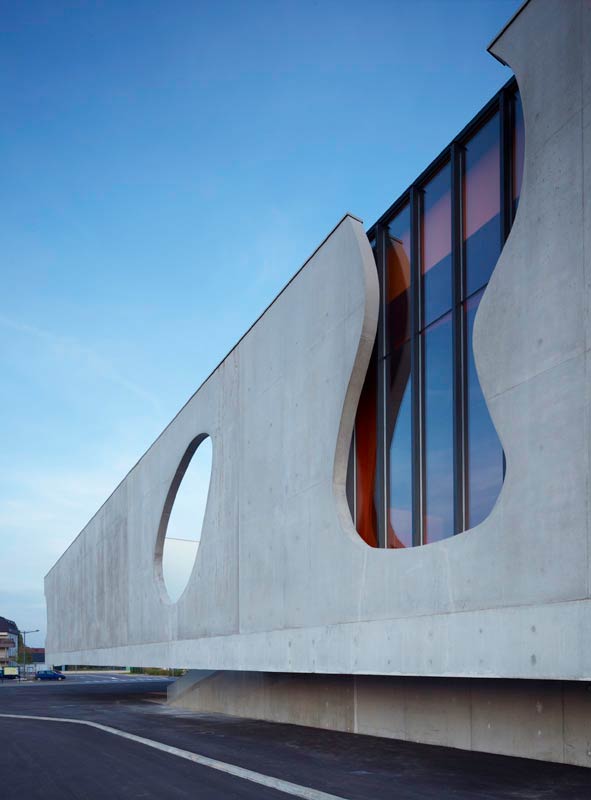
The outside of the building reveals little of the programme on the inside – only the large bay windows allow a glimpse of the community hall. It is possible to catch sight of the ephemeral movements of the dancers.
There is abundant natural light, with the highly coloured patios providing their own special light. This configuration of patios also protects the areas from disturbance from the nearby motorway.

The building is not designed merely as an elongated monolith, however. The outside curls round progressively, finally absorbing the two levels devoted to the music school. This curling adds dynamic impetus to the general outline, and the vanishing lines of the volumes seem strangely disturbed. The outer casing has the rustic appearance of everyday concrete – concrete that assumes its defects. The building is in reinforced concrete, cast on the spot, resting on piles.
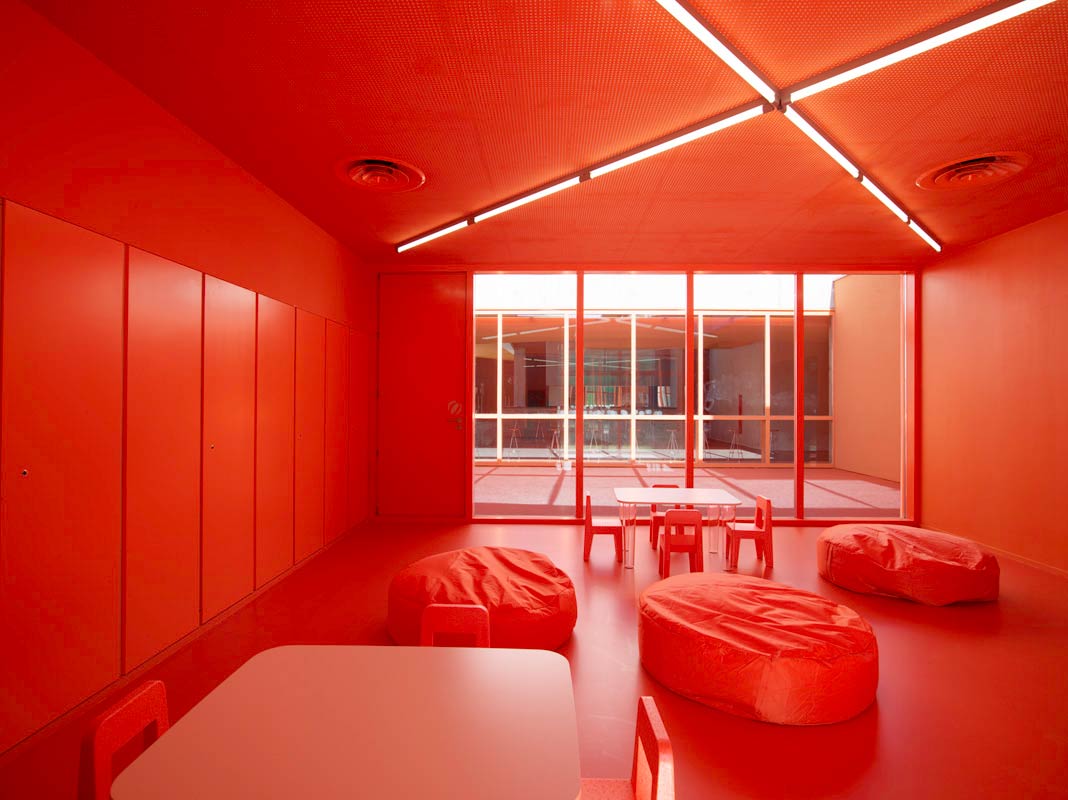
In contrast, the materials used for the interior are precious. The main hall is in light-coloured wood, while the ceiling allows glimpses of wonderful gilded surfaces through the large cavities, which gives the light a warm tinge.
The auditorium is hung with tensed wires on its three sides. The walls, designed to move with the slightest breath of air, reveal their thickness, contributing to the acoustics. The adjustable acoustic system, with its controlled shutters, disappears behind this elegant filter, serving as a critical component in the soundproofing process. If you’re interested in creating a similar setup for a home studio or music room, understanding different methods for soundproofing a room for music is crucial. The precious wood used for the flooring (wenge) reinforces the effect of a presentation box, adding an aesthetic and acoustic advantage.
The extracurricular centre for schoolchildren is monochrome; the orange colour saturates the space, and the shiny resin flooring reinforces its highly artificial aspect.
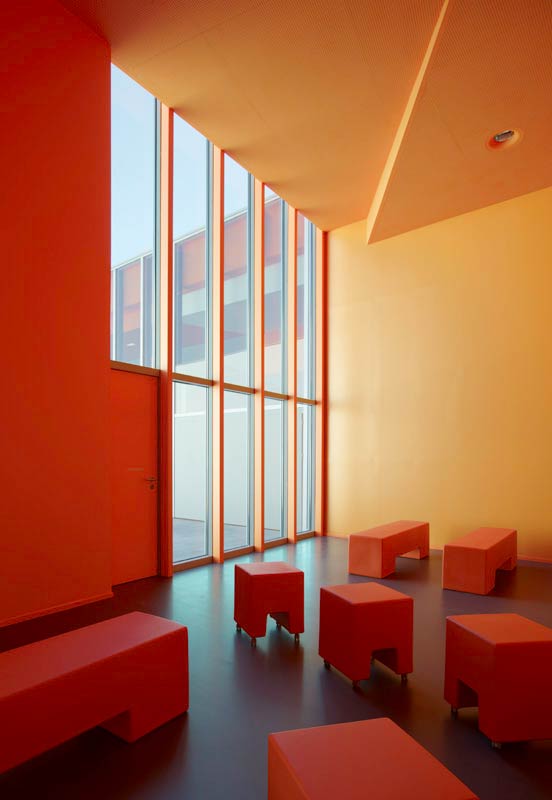
The primary logic consists of implementing very marked contrasts among the different areas: contrasting materials, contrasting colours, and contrasting light. The interior and the exterior are totally dissociated, with the rustic look of the outside is the diametrical opposite of the precious interior.
Project Details:
Location: MAIZIERES-LES-METZ, France
Type: Cultural – Public
Architects: Dominique Coulon et associés
Client: City of MAIZIERES-LES-METZ
Program: Music school, auditorium 130 seats, festive room, youth spaces
Area: 3400 m2
Photos: Eugeni PONS, Guillaume WITTMANN


